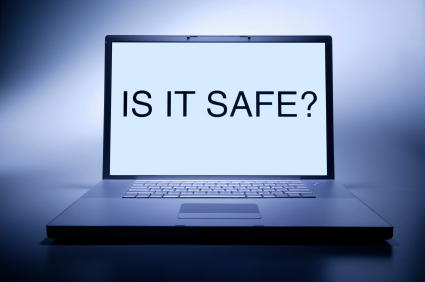
Contrary to critics, statute leads to better information for consumer protection.
When it comes to consumer product safety, information is key. The Consumer Product Safety Commission (CPSC) has a unique role in dispersing product safety information, but it can only give good information if it gets good information. Both consumers and companies expect that the CPSC will release good—that is, fair and accurate—safety information about specific products. Section 6(b) of the Consumer Product Safety Act codifies and promotes this expectation, directing the agency to check the accuracy of information about specific products before releasing it. Some criticize this provision as giving companies a veto over the release of information and have even urged the repeal of § 6(b). These criticisms are off-base and unfortunately misunderstand both what the law requires and why it exists.
While § 6(b) usually requires the CPSC to consult with a manufacturer before releasing information about its products, contrary to the claims of its critics, the law does not gag the agency. Instead, the provision serves the purposes for which Congress created it—to provide the CPSC with more information and to allow the agency to respond to that information earlier. This result is essential to furthering the agency’s consumer protection mission.
Under § 6(b), before the Commission may disclose information about a company’s specific product, it must provide to the manufacturer a summary of the information it proposes to disclose and allow the manufacturer to comment on the appropriateness of disclosure. (It should be noted that this section does not apply to product information collected during an administrative or adjudicatory proceeding, or when the agency has reasonable cause to believe that a violation of a consumer product safety rule has occurred.)
The company then has fifteen days to respond to the CPSC—and usually does so earlier—to let the Commission know whether it believes the disclosure to be unfair or inaccurate, or whether something should be added, removed, or changed before releasing it to the public.
If the company objects to the release, then the Commission can still release the information with five days’ notice, which allows the objecting company to seek a court injunction if it so strongly believes the release to be improper. As a failsafe, the agency can release information practically immediately, without regard to the above deadlines, if it publishes a finding that the information is necessary to protect public health or safety. In other words, while the agency must generally solicit the input of the affected company, it ultimately retains the ability to act quickly and decisively when public health and safety so require.
Information flow is vital to the CPSC given the agency’s consumer protection responsibilities. We occupy a watchtower, surveying the entire landscape of the products we regulate. The more sources of information we have, the better we can see and address emerging problems before they become crises. For us to operate at our best, those sources must include manufacturers.
At its core, § 6(b) tries to foster cooperation between the CPSC and product makers, by encouraging early submission of sensitive information about products. Companies are best-positioned to know about their products—including potential hazards that arise at any point in the product’s life, from design to manufacture to sale to use. While companies have a legal obligation to share information that shows a product could pose an unreasonable risk of injury, they do not need to supply the agency with information that touches on safety concerns but falls short of that legal standard. Yet, the CPSC needs this data to understand potential hazards properly. This situation poses a problem, and § 6(b) is the solution.
If a manufacturer learns something that may implicate safety, it has to make a judgment. Should it share the information with the CPSC? With § 6(b)’s guarantee that the CPSC will not release information before the manufacturer has an opportunity to verify it, the company is more likely to disclose to the agency in marginal or non-obligatory cases. Indeed, one manufacturer recently stated that it made ten reports to the CPSC for every one that resulted in a recall. The protection of § 6(b) provides incentives for a company to make such disclosures.
Absent § 6(b), the company might worry any information it provides will be in the next day’s newspaper, regardless of truth, fairness, or any real connection to safety. But based on the agency’s track record in handling information under § 6(b)—though that record has lately come under fire—companies can expect the agency to handle the information with care, and they can work with the agency quickly to resolve possible hazards.
When the agency gets the information early it can analyze it in light of its in-house knowledge and data gleaned from other outside sources. Thus, the CPSC can identify a problem—or the absence of one—in a way that no private party could. Working through this process allows the agency to provide a vital role to both the company’s and the agency’s ultimate stakeholder: the American consumer.
Fundamentally, § 6(b) is an information-sharing provision. If used properly, everyone benefits. Product makers can rest assured that we at CPSC will treat them fairly—that we will not precipitously release information that could be damaging without ensuring that it is fair and accurate. And consumers can trust the agency, both to get accurate information and to get information to them quickly. In the absence of § 6(b), the Commission and consumers would receive less information later than desirable.
Critics suggest that § 6(b) is contrary to openness and transparency in government. We firmly disagree. This provision is ultimately about getting relevant and accurate information out into the open, where the public can use it. Releasing every piece of information the Commission receives through voluntary submissions would, perversely, dry up information sources, leading to less and later disclosure of relevant information to the public.
While we can wish for a world where all companies provided all information to the agency all the time without something like § 6(b), that is not our world. Currently, § 6(b) encourages companies to provide as much safety information about their products as possible. Absent § 6(b), companies would very likely provide to the Commission only the information they absolutely must, which may discourage them from providing useful, but not legally required, information to the agency. Further, consumers would be less likely to get accurate information and less likely to get it early enough to prevent or reduce harm.
Section 6(b) is necessary for the Commission to function properly because it strikes the right balance among competing needs of industry, the agency, and the public. With § 6(b), consumers get more information—and that information is more likely to be useful—than without this vital statute.





